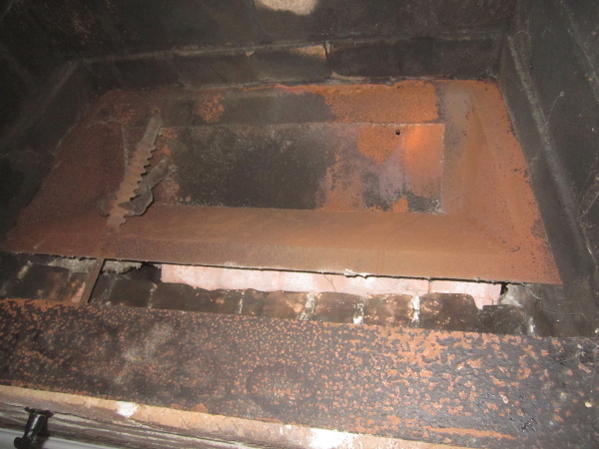I inspected a house that had a chimney that was used for the fireplace and furnace, which had a chimney liner for the furnace. I observed a gap between the damper and the masonry that needs to be sealed, which I definitely will report but otherwise the masonry and ceramic liner of the fireplace chimney did not look bad at all.
There was another chimney used for the water heater that had no metal liner and a badly deteriorated ceramic liner, which I reported as in need of repair. Though I have no intention of making such a recommendation, the outer masonry looked good enough to me that a metal chimney liner should be sufficient to correct it, provided fallen material from the deteriorated ceramic liner can be cleared from the chimney to enable the liner to be run.
My clients had a chimney repair company look at the house, and they not only recommended rebuilding the top portion of the obviously deteriorated water heater chimney, but “tuck pointing all over” the fireplace chimney, including “…overgrinding out the old mortar joint with a diamond blade saw, preparing the surface with muriatic acid, then putting new mortar back. Acid washing is done again after setup (usually 2-3 days) to remove smudges and smears.”
I know the chimney specialists are supposed to be “the experts,” but they also have a real lot to gain here, whereas I have no such vested interest, which goes back to why people hire inspectors rather than contractors to inspect houses.
This first 4 pictures are of the fireplace chimney and the 5th is of the water heater chimney. Glare from the sun made the 2nd pic difficult to brighten properly from the vantage point I had
Does the fireplace chimney look so bad as to require such extensive repair “all over” amounting to about $3000 of a $5000 job? Or is this contractor trying to milk my clients?




